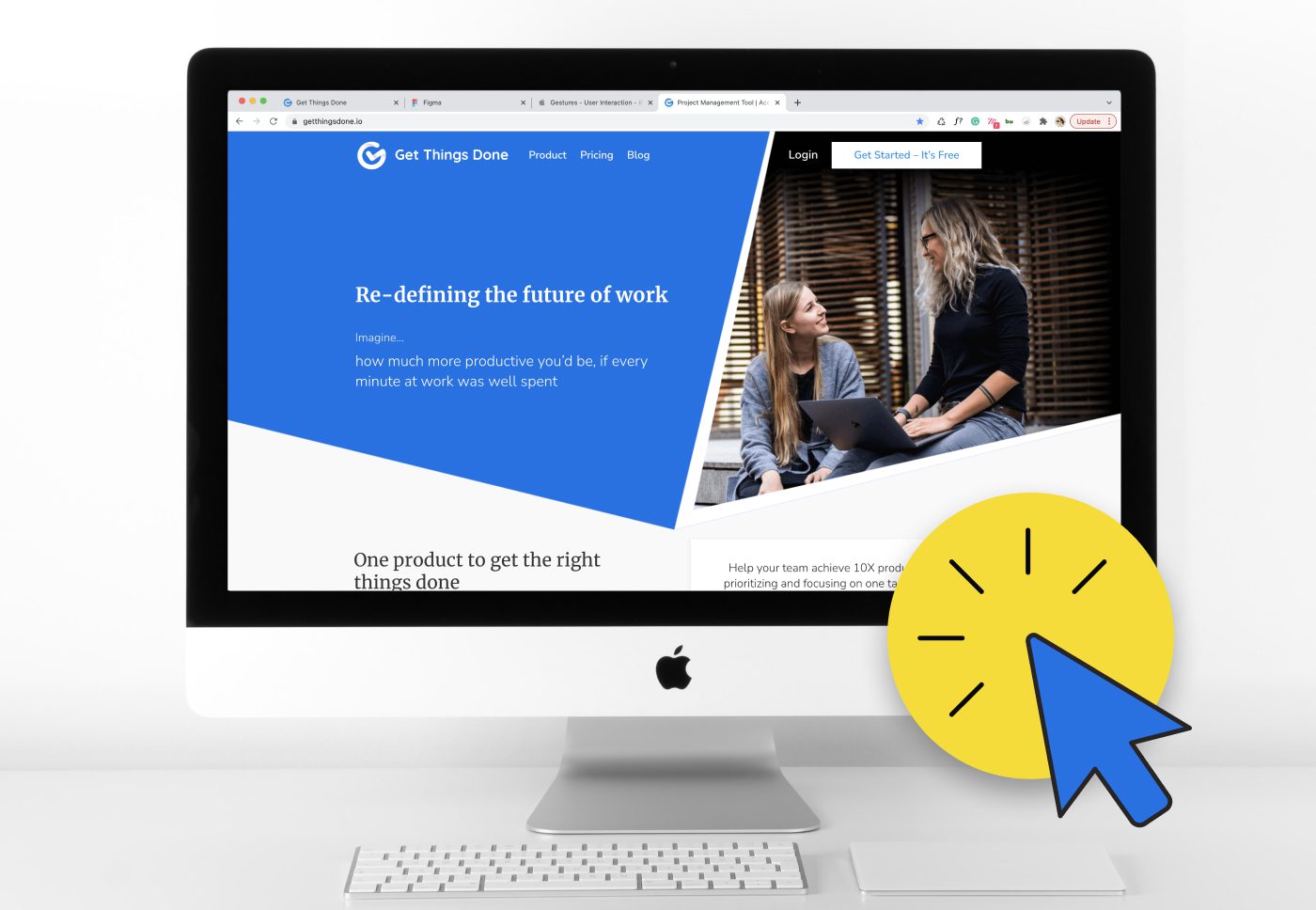Want Your Customers to Stay? You’ll Need App Modernization to Help You !
What do Google, Airbnb, and Apple have in common?
They are all innovative beyond measure, recognized worldwide, and everyone wants to be a part of their thriving culture. It’s almost as though they go that extra mile and do the thinking for you.
There’s one more thing that’s common among them and perhaps, frequently overlooked too. It’s their happy users! The kind that doesn’t mind or is excited to come back again. Those who are all praises about their experiences.
So, how then did these companies crack the code early on?
They did so by enforcing the ideology that a happy user is a lasting user. In keeping up with the times, these companies placed the user at the heart of everything and focused on the three main pillars that intrinsically make them who they are:
(a) they made their product as easy as possible to navigate
(b) they are constantly simplifying and re-inventing the experience for the user,
(c) and most importantly, by “being the user” themselves, they’ve mastered the art of being empathetic.
In doing so, they seamlessly and successfully blended app modernization techniques and design principles to create an enriching and valuable experience.
Apple’s fiscal 2021 Q1 revenue stood at a staggering $111.4 billion. But that didn’t just happen because they designed “pretty things”. It happened because of customer loyalty. Apple’s manuals train its staff to deal with each problem with empathy not sympathy.
Now, take a minute to look at your iPhone.
Isn’t it a sight to behold? Don’t have one? Isn’t it still a sight to behold from afar?
Apple has always been synonymous with beautiful designs and with an aesthetically-pleasing character that no one seems to come close to. Everyone’s after this sort of success, this sort of synonymity.
Yet, the sad truth is that most entrepreneurs, business leaders, or those creating apps have already decided what they want before even starting. They mistake half-baked research for insights, and as though they have permanent blinders attached to their heads, they refuse to budge. They are rigid and skeptical even to start thinking like a user.
Perhaps the better question to ask is, “why then are app designers and creators stuck in the past?”
The answer is hiding in plain sight — we are asking the wrong people.
The software industry saw its first-ever boom about 45 years ago when software engineers were designing apps. Up until even the early 2000s, UI designers were still a novelty, and user experience was mostly unheard of. So, when an engineer or even a programmer is tasked with designing, it may fall short.
UI and UX developers are often left wondering if engineers ever learned the concept of color theory — the cornerstone of a good design. On the other hand, engineers and programmers think designers are high maintenance.
When writing the code, the programmer isn’t just thinking about the backend or the technology; he’s also thinking about completing the project. He’s keeping in mind that apps may change over time, and for that, they rely on quick and easy fixes. Their primary goal is to keep the app flexible and testable when the time comes.
But that’s not the case with designers.
Do designers have it harder?
Designers are expected to see the future and anticipate changes. They must understand the function of something before they ask the user to perform said function. They need to ensure that they don’t present users with abused designs or ones that don’t evoke user interest. Is their task then done? Can they put up their feet and relax? No. Their unpredictable journey is yet to begin.
They constantly need to follow the user’s journey, collect data, understand what’s working, what’s not, and make sense out of the data to keep re-inventing and modernizing the app.
Why App Modernization is the Need of the Hour
Two words: CUSTOMER SATISFACTION
Focus intensely on solving customer pain points, after which every other hurdle will fall into place. And this is what the leaders, engineering managers, product owners, and the people running the show should prioritize.
They must understand that innovation is vital in creating an outstanding user experience.
And how can they achieve this? While designing is creating an experience, design thinking is how to create that experience. But design thinking isn’t just for designers. It’s for scientists, artists, writers, engineers, and anyone on a mission to create something valuable; something that will go down the ages. Design is in everything; we need to engage in Deep Work to understand the nuances of designing.
The future of app modernization may well start with UI and UX. But it is important to note how software and technology play an essential role in making the design come to life.
Didn’t you hear about what happened to Citibank?
And all it took was an outdated software! In what is considered one of the “biggest blunders in banking history”, Citibank accidentally wired $900 million to Revlon’s lenders. While it may have been a banking problem, it was a real eye-opener.
Was it the fault of the sub-contractor assigned to make the payment? Or was it the fault of the Flexcube software UX for being so ambiguous? Or should the entire onus be on Citibank for not updating their legacy system on time?
Some of the biggest and most popular software and applications that we use in our day-to-day lives, the ones running the world, are still the same as they were 20+ years ago. There are a few reasons why this creates problems. The primary one is business growth or the lack,
thereof.
If the system can’t support business expansion, it won’t support business growth.
What is App Modernization for Legacy Systems?
Let’s put our customers and user experience aside for just a second. Instead, let’s pay a visit to the millions of employees, like those working at Citibank who are still using outdated software and legacy systems. Not only do employees benefit from an App Modernization, the entire company does, too.
An app modernization takes existing or legacy applications to newer heights and fresher avenues. Many mistake app modernization as only a technical transformation, but it helps organizations fully leverage technologies like machine learning, AI, Cloud Services, and Big Data. It works to revamp your IT ecosystem to create a flexible foundation for the future.
It’s all about restructuring old and antiquated software to meet the latest needs in the computing world.
But does modernization of legacy systems offer an Enhanced Employee Experience?
It sure does!
The State of Software Happiness survey conducted by G2, a peer-to-peer review site, revealed that more than 50% of employees are unhappy at work due to the software tools they’re using. Almost 25% of respondents in the same report said that they’ve considered leaving their jobs because of the software they’re using in the workplace.
This displays the importance of modern software for both internal and external stakeholders.
Increase Revenue Streams
App modernization helps businesses increase their revenue streams by adding new services or processes, which add value for the customers. When your customers are happy, they’ll be bound to recommend the product or service to others, resulting in increased revenue generation.
Address Compatibility and Scalability Issues
One of the significant reasons for app modernization is that outdated software systems are not compatible with the latest software. Integrating the old with the new is a time-consuming, complex practice with the potential risk of breaking some vital business processes.
It is also an uphill task to scale legacy systems as modern technologies continue to evolve.
If you don’t start now, you could miss out on providing your consumers seamless, user-friendly, and simple experiences that delight them. Many leading global companies have shut shop, even while operating on great software but poor interfaces. To find ground zero in your app modernization journey, you’ve got to find empathy.
If you’ve created an app or working on an existing app and wondering why you haven’t been able to scale heights that you always thought you would, its mostly likely because you designed it for yourself and refused to look beyond your single-minded vision.
If you think there’s a magical way to become the best there is, we’ll be the first to disappoint you and tell you there isn’t. If you wish to create magic, nothing should be left to chance. It’s a good time to take a few steps back, miles if you must. Remove yourself from the picture. Now, look at the picture with only your user in it. Do you see how everything changes?
Listen, listen, and listen a little more, and when you think you’re done listening, pay attention. The path to growth and success is simply in giving the user what they need, and more importantly, giving them what they want, before they want it.





Share